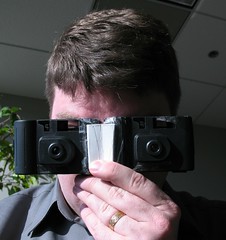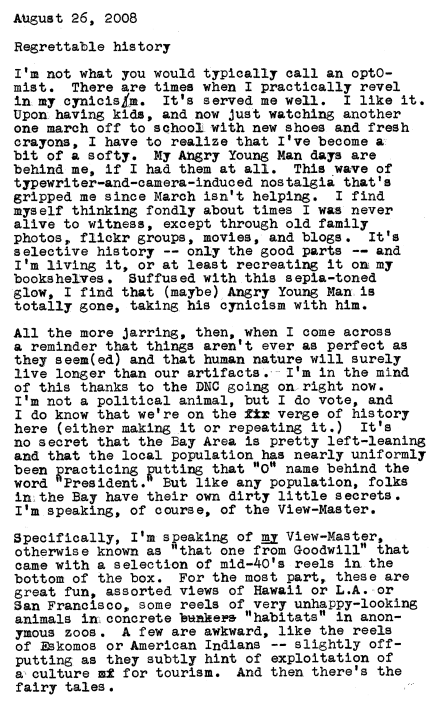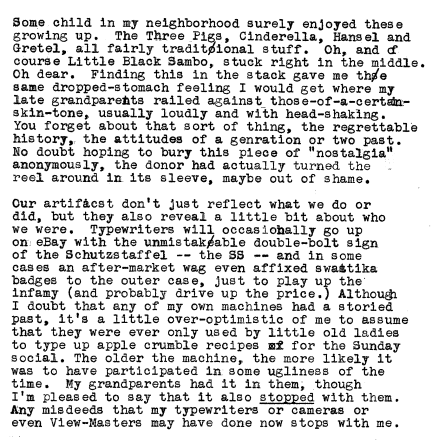 A few you you might remember my last ill-fated attempt at budget 3-D photography. If you've mercifully forgotten, it looked like this. The results were exactly what you would expect from two dollar-store cameras held together by packing type and cardboard scavenged from the copy room. Let's say they were less than stellar and move on.
A few you you might remember my last ill-fated attempt at budget 3-D photography. If you've mercifully forgotten, it looked like this. The results were exactly what you would expect from two dollar-store cameras held together by packing type and cardboard scavenged from the copy room. Let's say they were less than stellar and move on.3-D photography (technically stereo photography) has been around for decades, it's not a new trick, and you can even fake it by taking two pictures, sliding your camera horizontally a bit between shots. There were a lot of dedicated cameras built over the years, some which would even let you prepare your own View-Master slides. Pretty cool stuff, but being collectible, this sort of camera is one of those would-be-nice-to-have-but-not-at-that-price items.
Well, it looks like Fuji is trying to reinstate 3-D photography again, giving it a 21st century kick in the pants with a new dual-lens digital camera that sports an tehnobabble-laden set of diagrams illustrating exactly how this will work. It's all very fancy and impressive, and one of the points they're touting is the use of "a fine pitch lenticular sheet" over printed photos to give you the 3-D effect without glasses or a viewer or doing some kind of crossed-eye technique. You know what lenticular sheets are: remember those little rulers we'd have as kids that had pinwheels printed on them, and as you tilted the ruler, the wheel would appear to turn? (Hey, it was the 70's.) That bumpy, clear plastic surface was the lenticular lens, which showed you different views of the underlying image. There's software and products out there that will even let you do this yourself.
What Fuji fails to mention, though, is that lenticular 3-D photography is nothing new, either. Behold!

This monster is a Nishika N8000 camera, which takes four half-frame photos on 35mm film. (It's also freaking huge, and I'm been informed that it's "totally pimp style" whatever that might mean.) Despite all the high-tech appearance, this is just a basic, mostly-plastic fixed-focus camera. You can follow the article links on Camerapedia to find out more about its history. Nishika would offer lenticular printing of your cherished photos of... whatever you decided needed the winky-blinky 3-D treatment. Nishika's gone now, but of course there's a small group on flickr of folks who use it and scan the results, assembling them into animated images that trick your eyes and brain into figuring out the 3-D scene. This one is one of my favorites right now since it demonstrates the advantage of a multi-lens camera: taking photos of something in motion.
I loaded up my Nishika this morning for the walk with the dog and took some photos around the neighborhood. I don't want to befuddle the Walgreens clerk with a roll of seemingly identical half-frame shots, so this is going to be another Caffenol roll. I'll let you know how they turn out. With four lenses, this should be twice as much fun as that jazzy new Fuji, right? Besides, Nishika even bothered to put together this painfully earnest and horribly cheesy instructional video starring the late, great Vincent Price:


